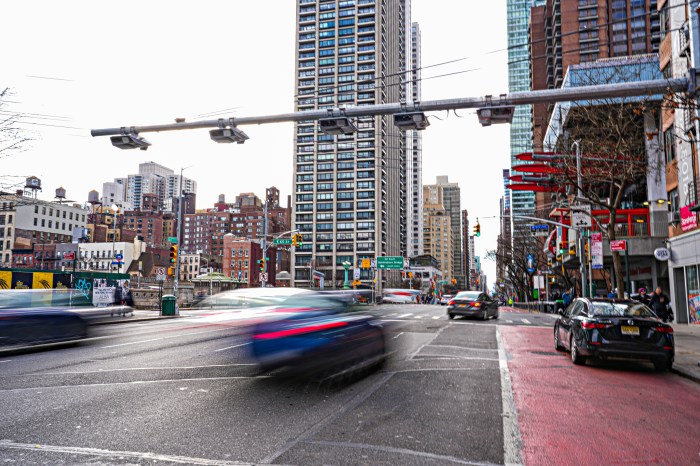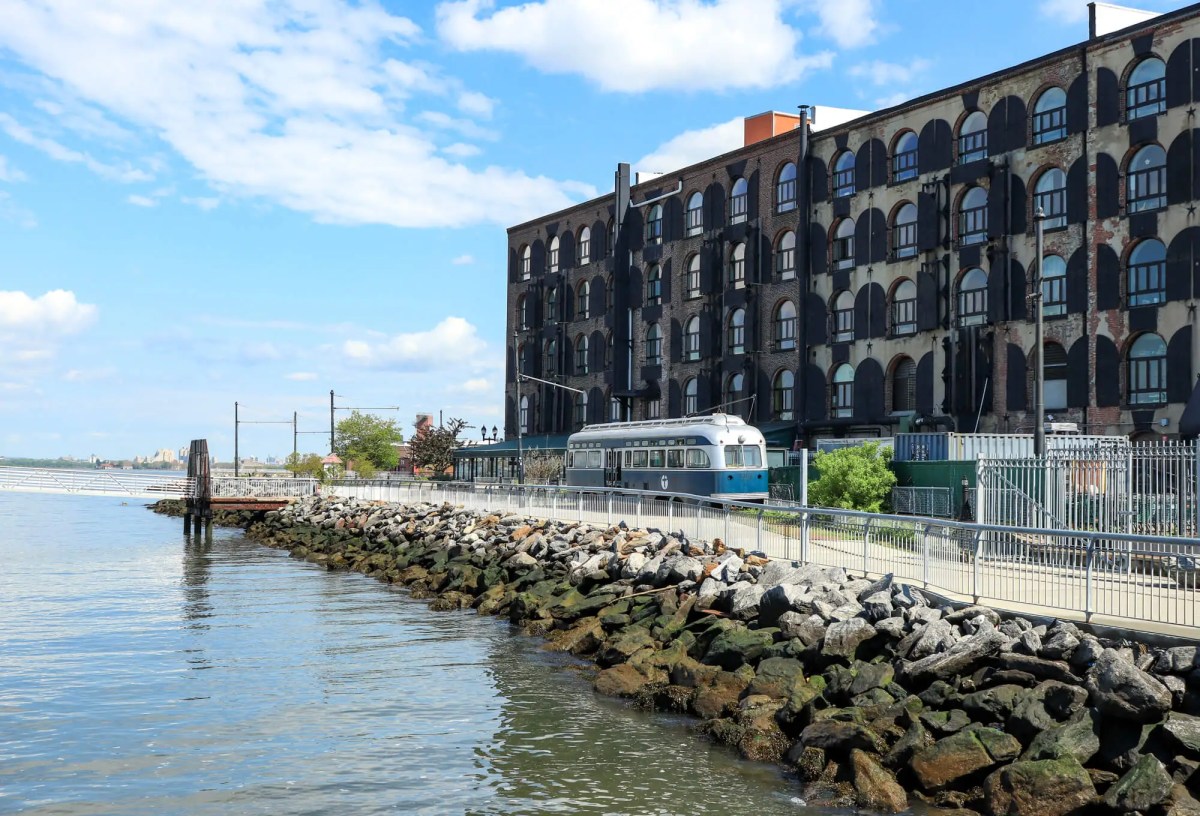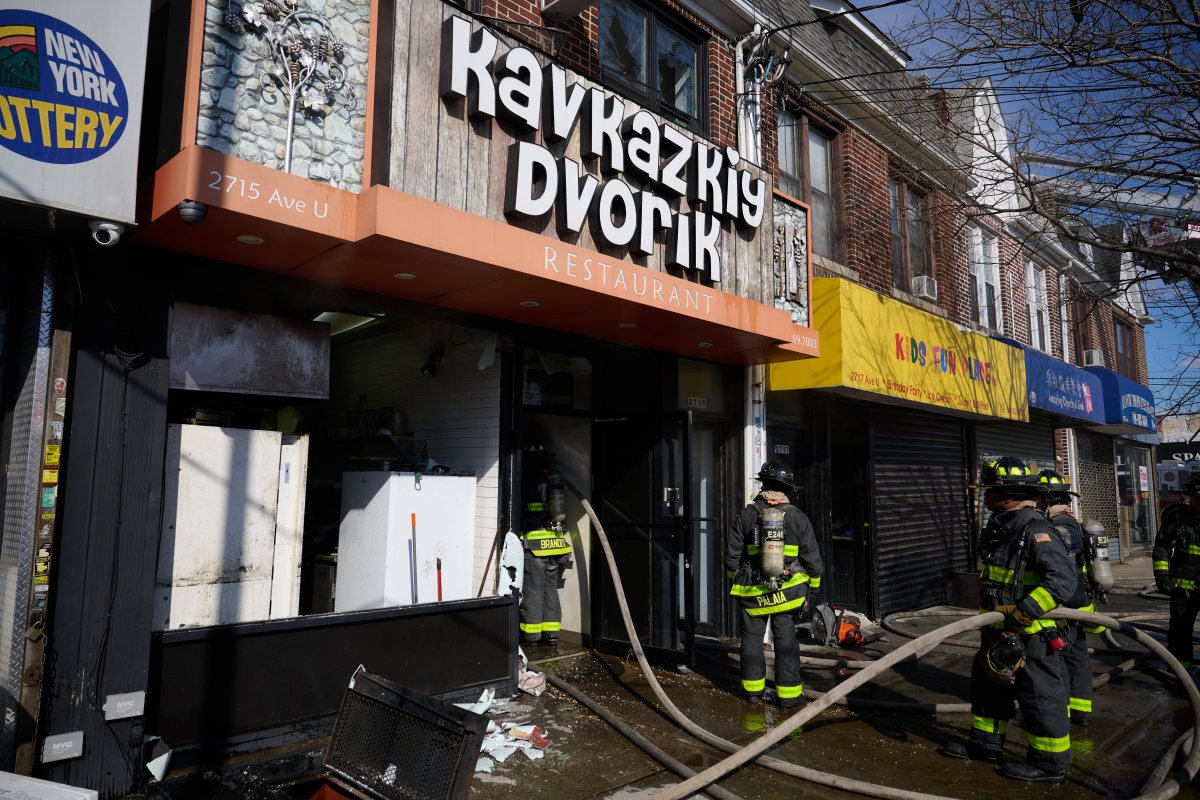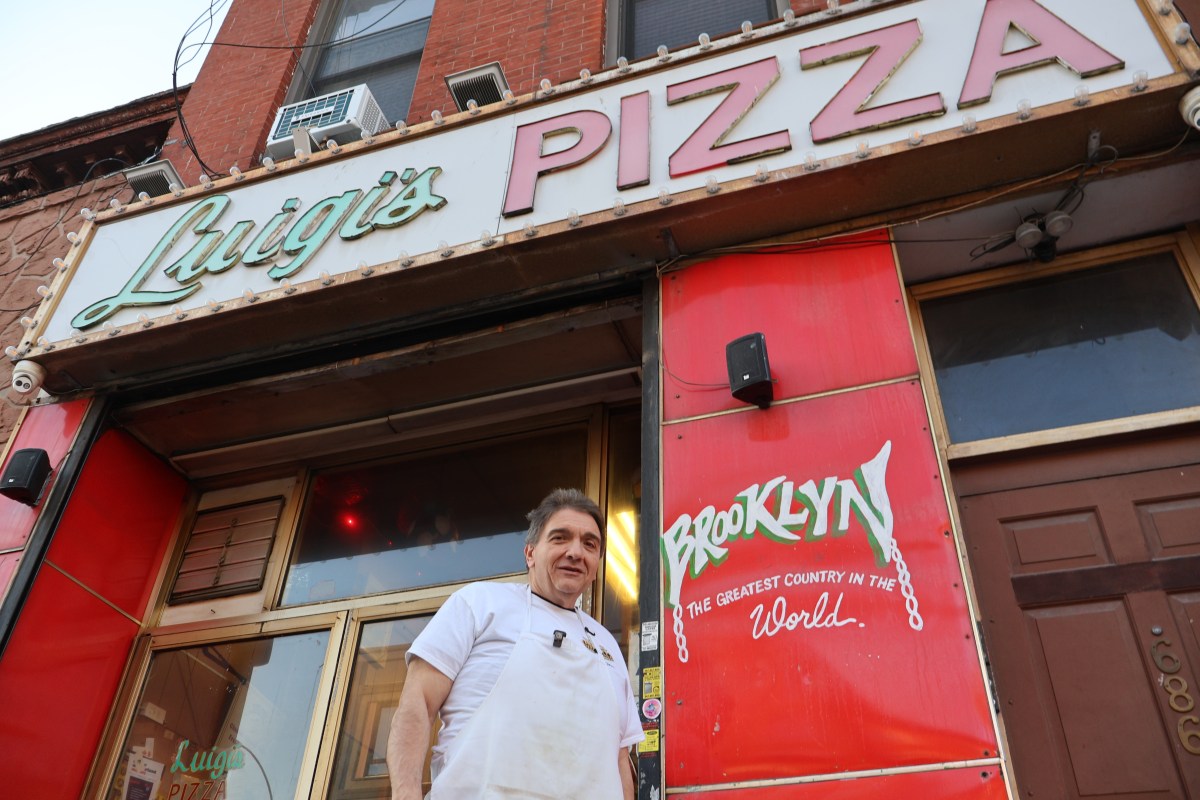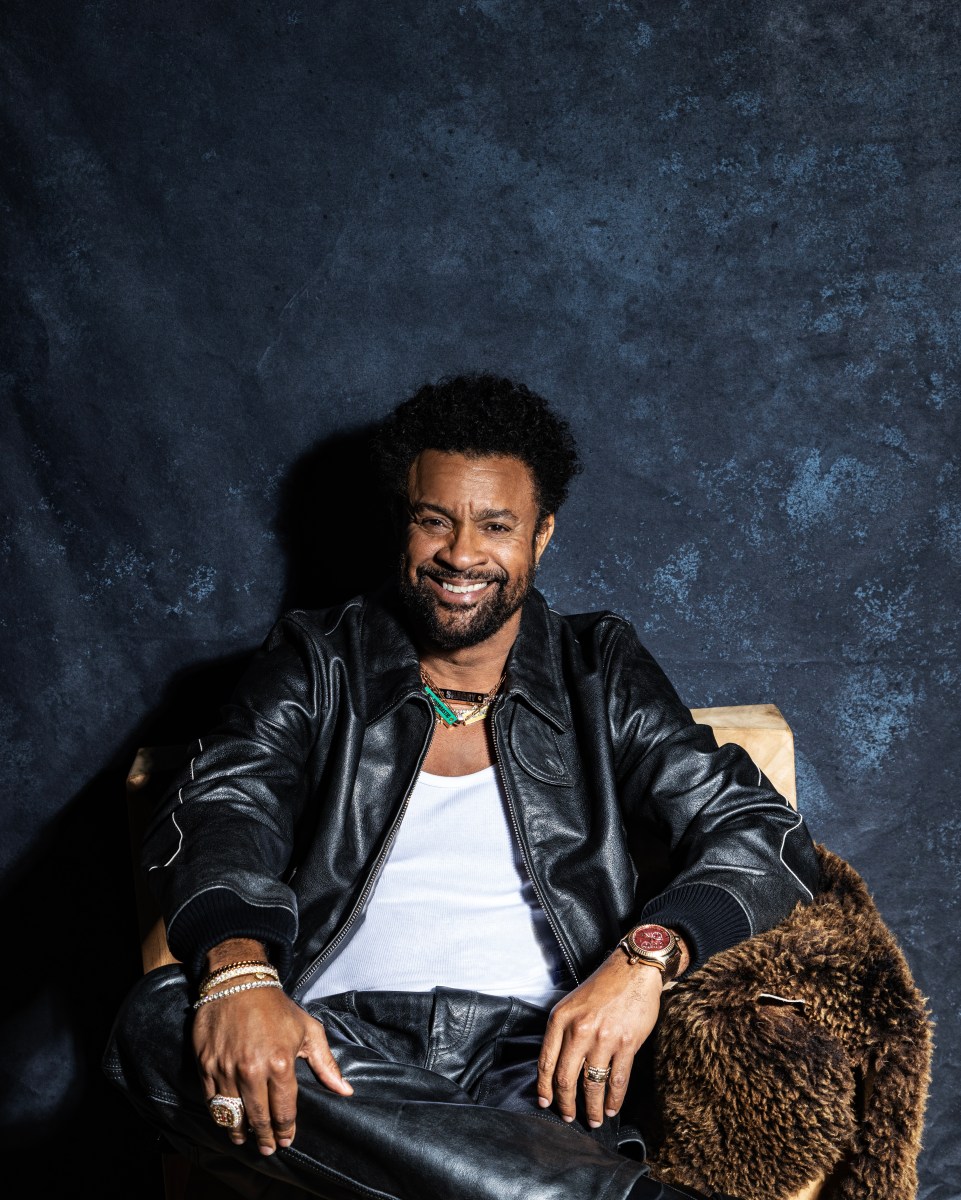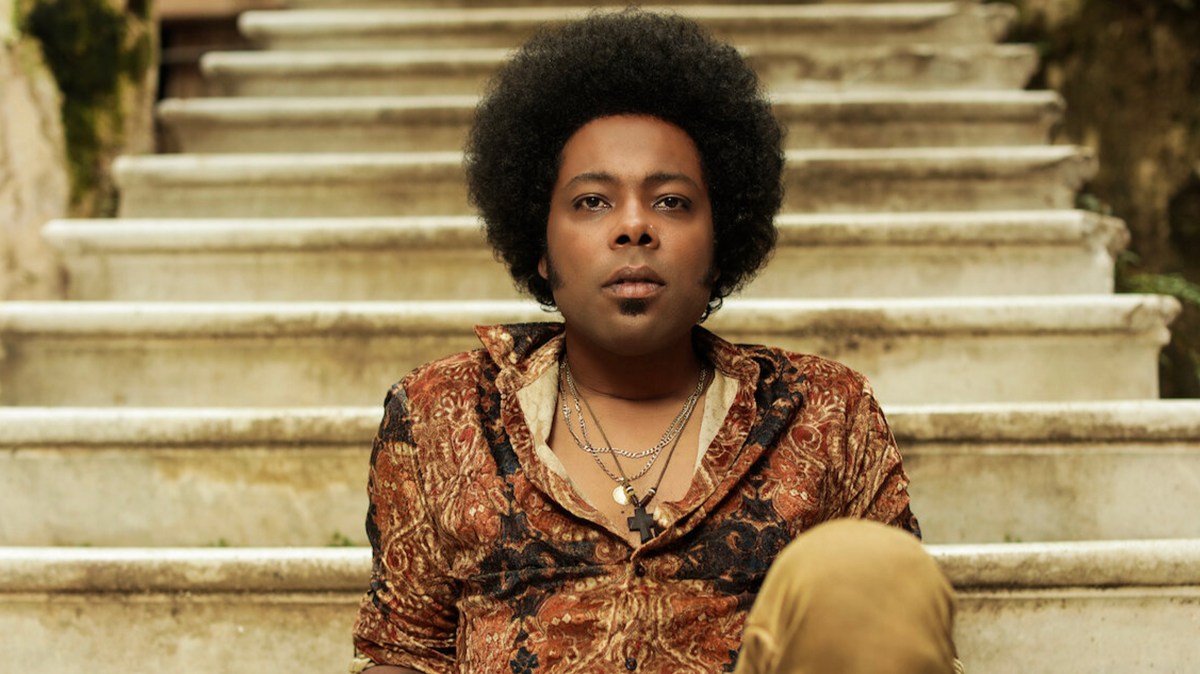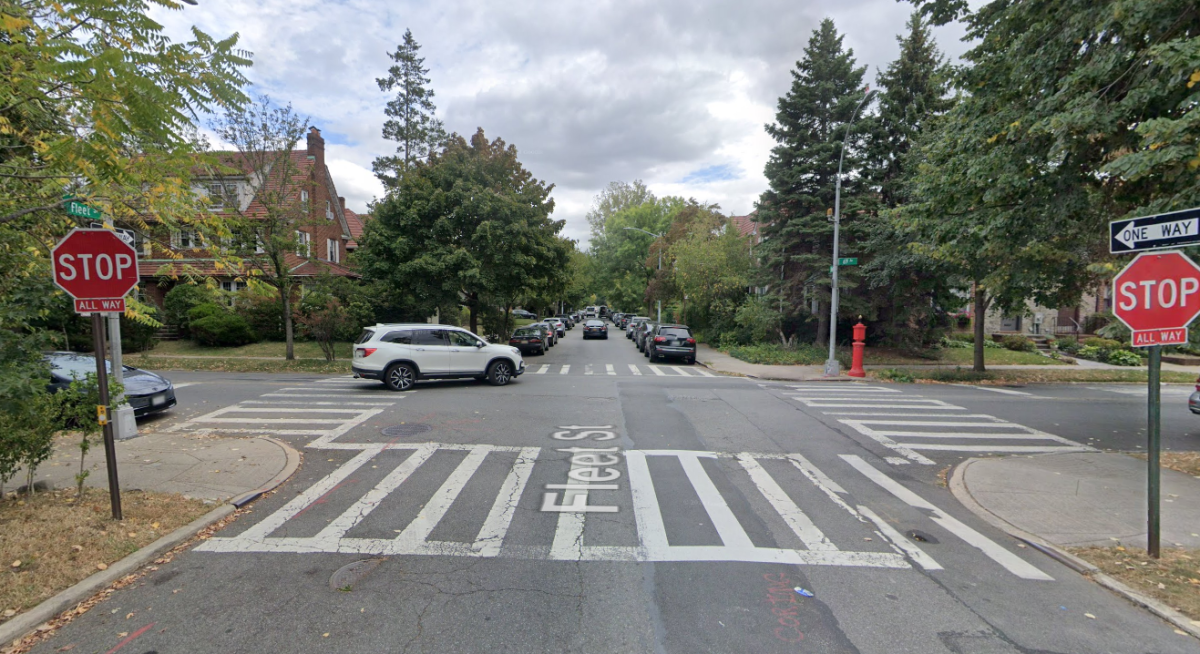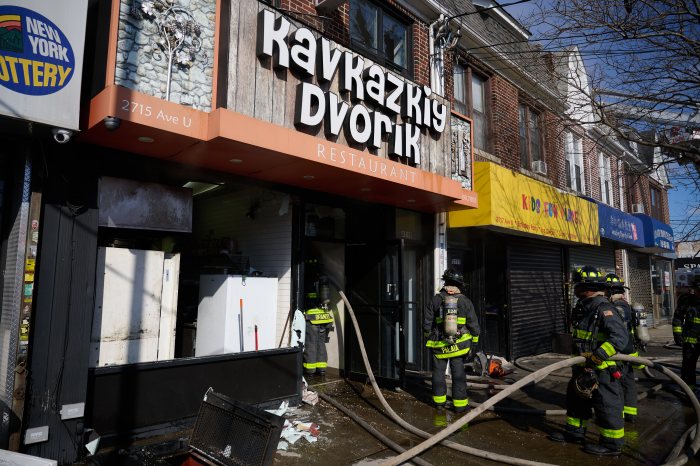
Transit advocates and local politicians rallied on the steps of City Hall Monday in support of bringing more school-zone speed cameras to New York City.
“We should not have to worry about a child crossing a street. That shouldn’t be matter of life or death,” said Public Advocate Letitia James at the rally. “And we know what the answers are. We have solutions.”
Safe streets advocates are pushing for the state Assembly to pass the “Every School Speed Safety Camera Act,” which would allow the city to install thousands of additional cameras near schools.
Under current state law, the city can place a maximum of 140 speed cameras near schools. Those cameras must be located within a quarter mile of a school entrance. And they can only be operational during school days for 12 hours each day.
The new bill, introduced by Manhattan Assemblywoman Deborah Glick this April, would remove the restrictions on the number of cameras and those hours of operation in New York City.
“The artificial cap of 140 cameras, when we have hundreds of school buildings, needs to be lifted so we can protect children at all schools,” Glick said in a statement.
Glick’s bill would allow the Department of Transportation to place speed cameras near the more than 2,000 city schools and nab speeders at any time of day.
“We know that these cameras are saving lives,” said Paul Steely White, executive director at Transportation Alternatives, outside City Hall. “And we absolutely must expand this program.”
White points to data to argue for the expansion. The city’s first speed cameras were installed in 2013 as a key tool of Mayor Bill de Blasio’s Vision Zero effort. Since, speeding has dropped more than 60% around schools where cameras have been installed, according to DOT figures. And White says more than 50% of fatal crashes occur when the cameras are currently turned off, between 6 p.m. and 7 a.m.
“There are more than one million kids who need the protection of these life-saving devices,” White said. “It’s unconscionable that so many of our kids are not protected.”
The cameras have drawn ire from some drivers and certain politicians that represent more car-dependent areas of the outer boroughs.
“I’m opposed to speed, red light and bus cameras, which are revenue-generating gimmicks,” said Assemblywoman Nicole Malliotakis, who represents parts of Staten Island and Brooklyn. She suggested that some locations of cameras, like those placed near expressway exits, operate like speed traps.
Under the new bill, the fine structure would remain the same: drivers caught traveling more than 10 miles above the speed limit will be issued a $50 ticket.
“They just get a ticket,” Malliotakis said. “These cameras do nothing to stop repeat offenders or get those dangerous drivers off the street,” Maliotakis added.
White countered that the cameras were not about revenue.
“Revenue goes down as speeding goes down. We want to put these cameras out of business,” said White. “The mark of a successful safety program is not revenue, it’s lives saved.”
Queens Councilman Jimmy Van Bramer, who stood at the rally with his colleague, Councilwoman Helen Rosenthal, said he’s tired of hearing gripes from his constituents about the tickets.
“They should get tickets if they were speeding,” Van Bramer said. “People complaining about getting camera tickets for speeding outside a school is disgraceful.”
Advocates will head to Albany Tuesday to lobby for the senate to draft its version of the bill.
“People cannot understand how painful it is to lose their child,” said Amy Cohen, a member of the advocacy group Families for Safe Streets. In 2013, Cohen’s 12-year-old son, Sammy Cohen Ecketein, was struck and killed by a van in Brooklyn. “Sammy was a very cautious, smart child. I’m here to say, sadly, if it could happen to him, it could happen to your child. Without these cameras, so many are at risk.”
The mayor’s office said it’s in favor of adding cameras around the city.
“We are fully committed to keeping our students safe in and outside the classroom,” said Austin Finan, spokesman for Mayor de Blasio, in a statement. “That’s why we support an expansion of the successful school speed zone camera enforcement program.”






